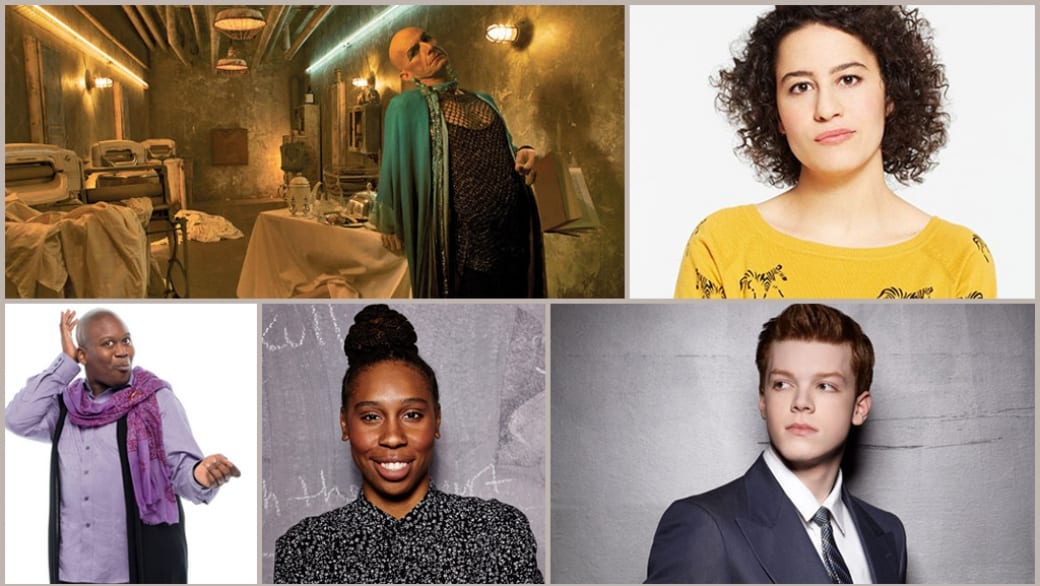
To say queer representation on TV has changed over the years would be a gross understatement. LGBT media watchdog GLAAD has published its annual Network Responsibility Index (NRI), which analyzes and catalogues queer visibility on major networks and online streaming services alike with the aim of increasing queer representation. This year, the NRI reiterated a trend of ballooning queer representation on TV.
Heartening as the NRI’s findings may be, the more important issue is the depth and quality of those LGBTQ characters.
With that in mind, Daily Xtra has composed a list of five queer characters making a substantial impact on shows currently on the air.
-
Ian Gallagher — Shameless (US)
Showtime’s American answer to the original British Channel 4 series Shameless is the stark, hysterical and gut-wrenching story of the Gallaghers — a family of seven struggling to make ends meet in the Canaryville neighbourhood on Chicago’s poverty-stricken, but rapidly gentrifying, south side. As one of six children, Ian Gallagher (Cameron Monaghan) showcases one of the more compelling and diverse depictions of queerness on TV right now. Diagnosed with bipolar disorder, Ian underscores the lack of believable, sympathetic portrayals of those within the LGBTQ community living with mental health issues. What makes Ian’s character noteworthy is its dimensionality. All too often in film and TV, queer characters with mental health issues have jumped straight from the pages of the Diagnostic Statistical Manual. Monaghan’s portrayal of Ian Gallagher is multi-faceted and altogether refreshing.
-
Ilana Wexler — Broad City
Still sorely lacking in today’s TV landscape is the representation of bisexual and sexually fluid characters. Ilana Wexler’s (Ilana Glazer) character in the Amy Poehler–produced Broad City offers a side-splitting portrayal of a character simultaneously preoccupied with locating “pink dick” and bedding her best friend Abbi Abrams (Abbi Jacobson). Ilana’s character points toward a shift in paradigm and a fearless refusal to be truncated by sexual labels. Her character never outright identifies as bisexual or queer, despite her varied conquests. The closest thing to an admission the audience receives is her now famous line, “I have sex with people different than me.” Ilana signifies a new optimism in queer identity and a spirit entirely untethered by staid sexual norms and labels.
-
Titus Andromedon — The Unbreakable Kimmy Schmidt
What brings Titus Andromedon (Titus Burgess) to life is the viperish, razor wit of Tina Fey and her gifted writing team. Titus’ character is an exercise in self-reflexivity, an embracing of stereotypes that blasts historical representations of queers on screen. A struggling actor not-so-destined for Broadway and living in New York City, Titus embodies a laundry list of characteristics that have traditionally constituted the gay male stereotype on screen. What salvages the character from being a tired archetype is the writing and ingenious performances Burgess delivers. Instead of pejoratively depicting his character as effeminate, Fey and company have instead loaded Titus into the chamber of a pistol and taken aim at mainstream audiences, forcing them to confront their own homophobia.
-
Liz Taylor — American Horror Story: Hotel
Ryan Murphy is a dominating creative force on TV today. He and co-creator Brad Falchuk’s anthology series American Horror Story (AHS) — in which each season is an entirely new concept using many of the same actors as new characters — has been both critically and commercially successful with scores of queer characters to its credit. Perhaps the most notable of these is Liz Taylor (Dennis O’Hare). The season’s fifth episode, “Room Service,” serves as background for Liz and her transitioning and is one of the series’ finest hours. Liz finds solace in the fictional Hotel Cortez where she will come to tend bar and share front desk duty with Iris (Kathy Bates). In a series of flashbacks and flash-forwards, a mechanism AHS has mastered, Liz’s story unfolds. “I’m not homophobic,” Iris asserts. “I’m not gay,” Liz responds, powerfully underlining the oft-misinformed discrepancy between sexual orientation and gender identity. Liz’s character, with all her flaws and glory, trapped in the looping nightmare of the Hotel Cortez, is one of the most poignant, moving and rewarding trans characters on TV today.
-
Denise — Master of None
This year’s Golden Globe nominations signalled a massive change in how consumers are watching TV. Netflix was shoulders above mainstay broadcasters like CBS and FOX. Original Netflix series like Orange is the New Black charged the way. Master of None recently garnered a best actor in a comedy series nomination for writer and star Aniz Ansari, of Parks & Recreation fame.
“If you’re born with a vagina, everybody knows creepy dudes is just a part of the deal,” deadpans Denise (Lena Waithe) — a stylish, brilliant lesbian who also happens to be one of many queers of colour on TV right now (Empire’s Jamal Lyon and Sense8’s Lito Rodriguez come to mind). What sets Denise in Master of None apart from other characters on TV, queer or not, is her brazen wit, brains and comic delivery.
Characters like Denise and Ian Gallagher are cause for optimism where queer representation is concerned. Networks like HBO and streaming services like Netflix and Amazon have exposed an appetite for multi-dimensional queer characters on TV who drive substantial, in-depth storylines outside the tragic plots and sketchy character arcs LGBT viewers have been made to endure for decades.
Let’s hope this wave of queer representation in TV is not a trend at all, but a new standard to which networks can aspire to effect positive change.

 Why you can trust Xtra
Why you can trust Xtra


